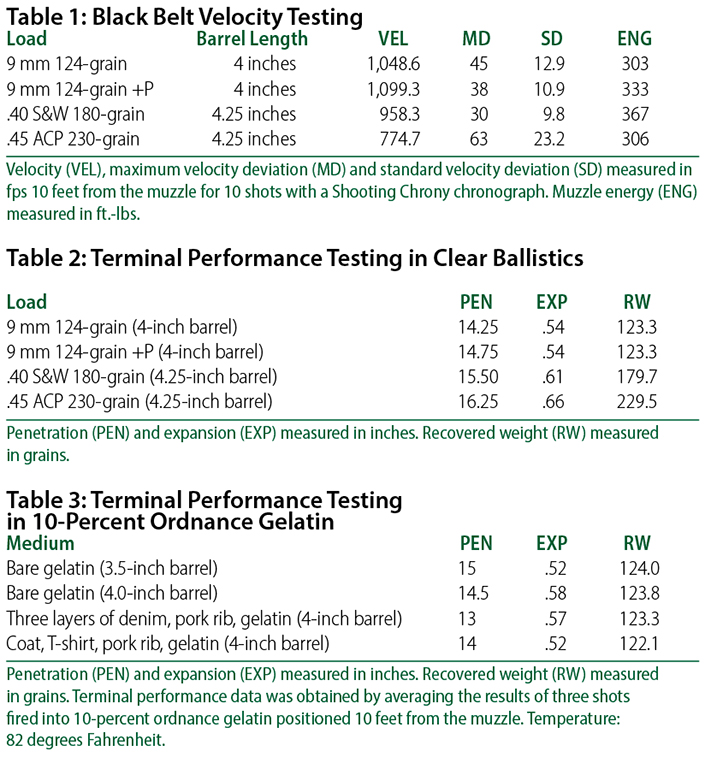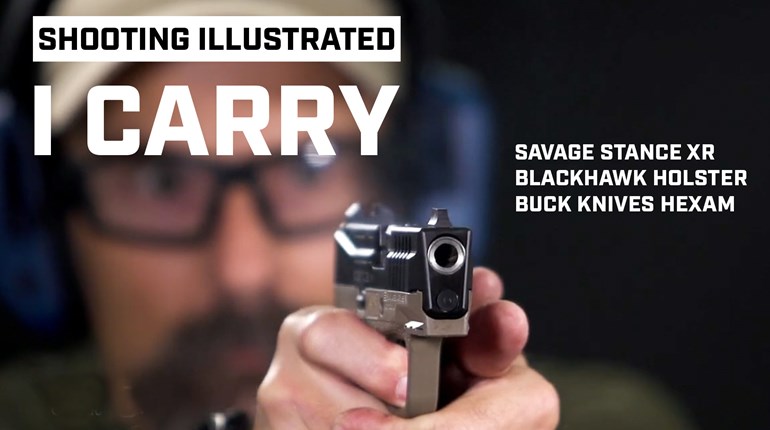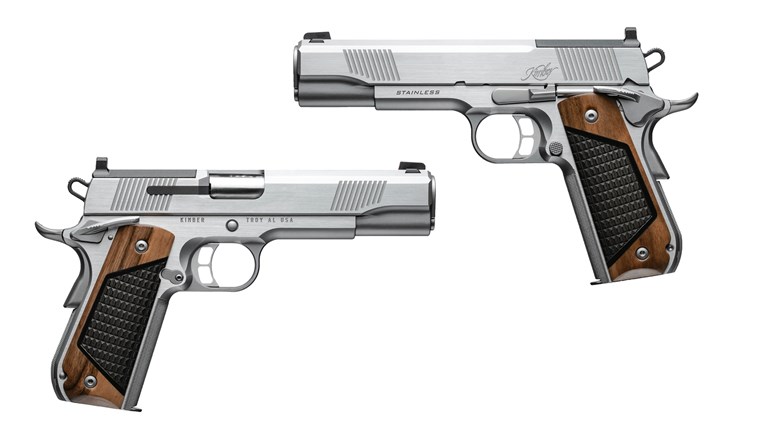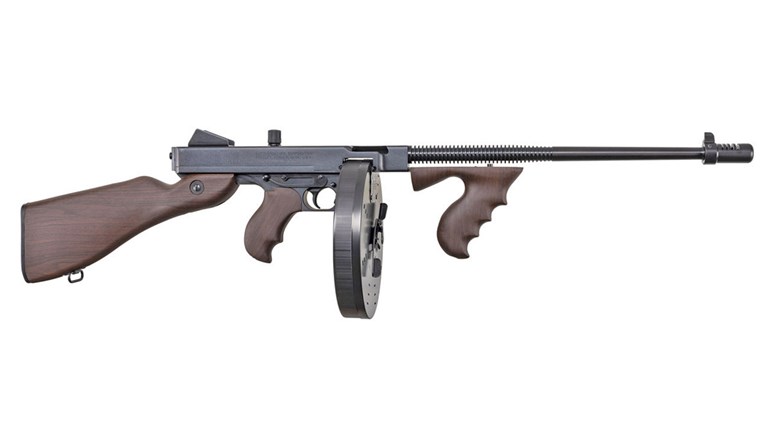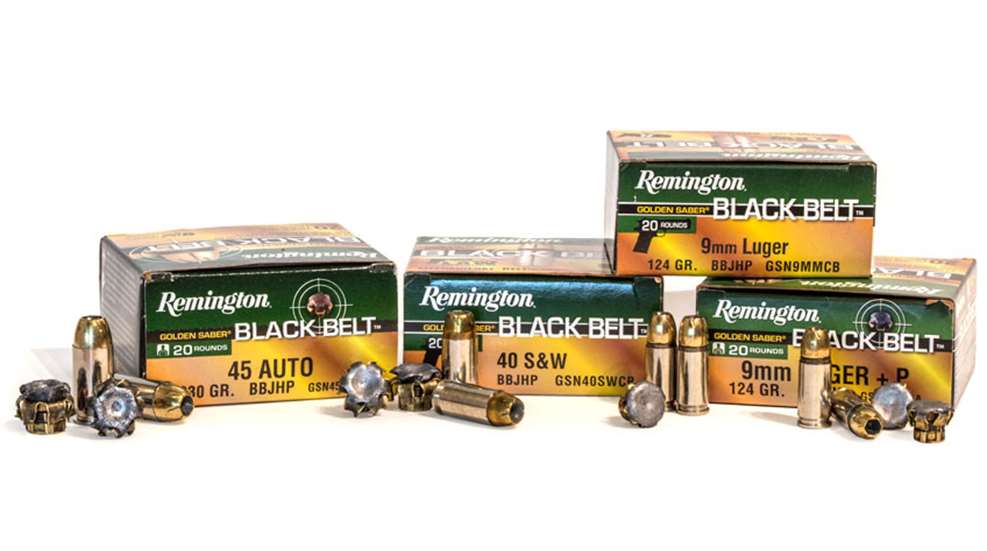
Remington introduced Golden Saber ammunition in 1991 to meet the requirements of the Federal Bureau of Investigation (FBI). It has been modified several times since, and in 2014 Remington gave it a black belt, which has come in the form of the Remington Black Belt line of defensive ammo. In martial arts, a black belt represents the highest level of accomplishment. With regards to defensive-handgun ammunition it just might mean the same thing.
The Golden Saber story actually began at Winchester when bullet engineer Dave Schluckebier conceived the notorious Black Talon. He later went to work for Remington, and began creating the Golden Saber. Schluckebier started with a reverse jacket—meaning the jacket was drawn from the base forward and the core was inserted from the nose of the bullet. However, cartridge brass (70-percent copper and 30-percent zinc) was used as the jacket material. This was partly because it’s stiffer than gilding metal—the commonly used bullet jacket—and partly because it’s also stronger.
Realizing the importance of real-world performance, instead of using wax, water, or bare gelatin for testing, Schluckebier used heavily clothed gelatin.
There were two additional unique and patentable features of Schluckebier’s Golden Saber. First, it has a driving band, which was bore diameter, and at the rear of the bullet. This reduced bullet-bearing surface and allowed precise bore alignment. Second were the spiral nose cuts, which are pre-stressed areas of the jacket to help the bullet deform widely and reliably. Unlike conventional hollow points, where the core is the primary element of expansion, with the Golden Saber it’s the jacket. This translates to more weight retention and deeper penetration, too.
Another Remington bullet engineer by the name of Nick Sachse was responsible for the bonded version of the Golden Saber; it became available in 1998. However, in what I consider an unwarranted and discriminatory move, Remington restricted the sale of bonded Golden Saber ammunition to law enforcement. Sachse was later promoted to a managerial position, and Remington once again tasked him with improving its golden bullet. Sachse turned to Jason Imhoff, who wisely sought the expertise of handgun-bullet guru Tom Burczynski. A bullet genius, Burczynski was responsible for the Quik-Shok, Starfire, Hydra-Shok and expanding FMJ (EFMJ) bullet designs.
Burczynski’s and Imhoff’s goal was to achieve bonded-bullet performance without bonding, ultimately reducing manufacturing costs. Their solution was to fit a belt around the bullet, just forward of its driving band. A simple explanation is that bullet belt would work like a weight lifter’s belt. In theory, the belt would keep things from busting when extreme stress was applied. In reality, it prohibits expansion past the belt and holds the core in place. Ultimately a black, nickel-plated belt, made of the same cartridge brass as the Golden Saber’s jacket, was chosen—hence the black belt name.
Similar to the Golden Saber, the Black Belt was engineered to meet FBI requirements, and for a while, Remington Black Belt ammunition was, just as with bonded Golden Saber ammo, a law-enforcement-only offering. Several years ago Remington started the process of releasing Black Belt ammunition to the civilian market. However, in order to keep up with the fantastic demand—at the time—for ammo, the process has taken some time. Black Belt ammunition is now available and you should be able to order it from your favorite distributor or find it on shelves at your local gun shop. Four loads are offered. There’s a 124-grain standard and +P offering for the 9 mm, a 180-grain .40 S&W and a 230-grain load for the .45 ACP. All are sold in 20-round boxes and retail for about $1.15 per round.
Remington provided 100 rounds of each load for testing. I first fired about 75 rounds of each offering through many handguns to get an idea of reliability and precision. There were no failures, and all the loads delivered better-than-needed accuracy for defensive-handgun use. I then fired 10 rounds of each over a chronograph to establish velocity averages, fired several rounds of each into clear ballistics blocks and finally, conducted a bit more testing with the 9 mm +P load in 10-percent ordnance gelatin. The main take-away from these tests is consistency—consistency of velocity and even consistency of terminal performance.

With the exception of the .45 ACP load, standard-velocity deviations were very low. The average standard-velocity deviation for 40 shots—with all four different loads—was only 14.2 fps. But most amazing to me was the minimal variations in penetration and expansion, regardless the caliber and medium. No matter which load was tested, and no matter what the bullets were fired into, penetration ranged from 14 to 16.25 inches. When it comes to terminal performance, Remington’s new Black Belt ammunition might really represent—as the black belt does in martial arts—the true efficacy of the wearer.
It must be acknowledged that there are lots of great defensive-handgun loads from which to choose. If Remington Black Belt ammunition is reliable in your carry gun, I don’t see how it could be a bad choice. I will also concede, as the late, great gunwriter Finn Aagaard once opined, “90 percent of stopping power is good shooting.” However, I like to hedge my bets, which is why Black Belt ammunition is one of the two loads you’ll most commonly find in any 9 mm handgun I happen to be carrying and, at present, I carry a 9 mm more than any other chambering.
